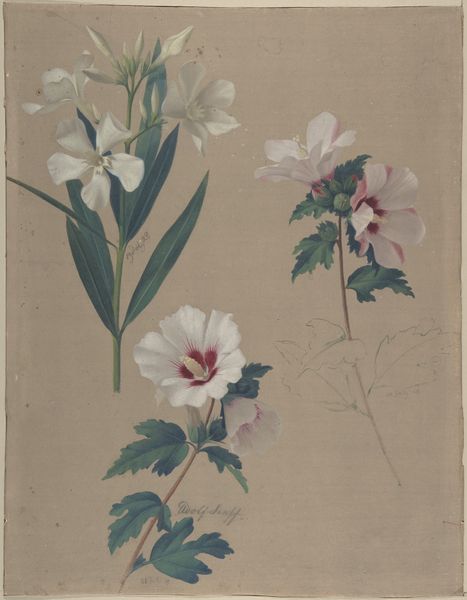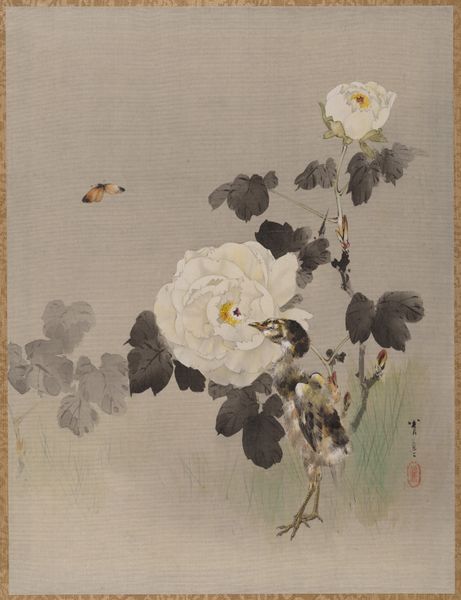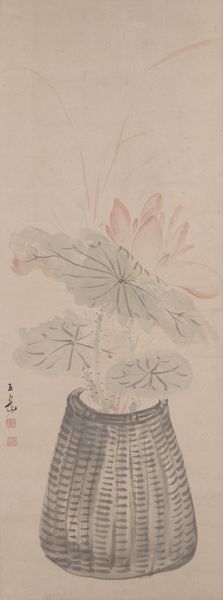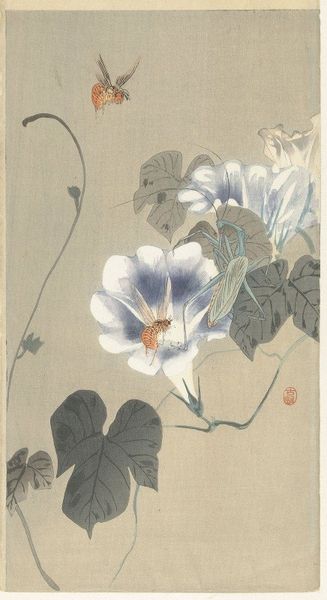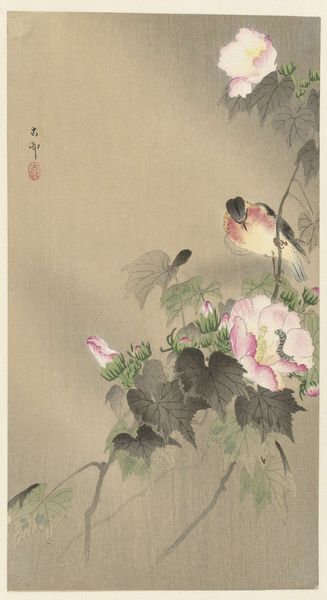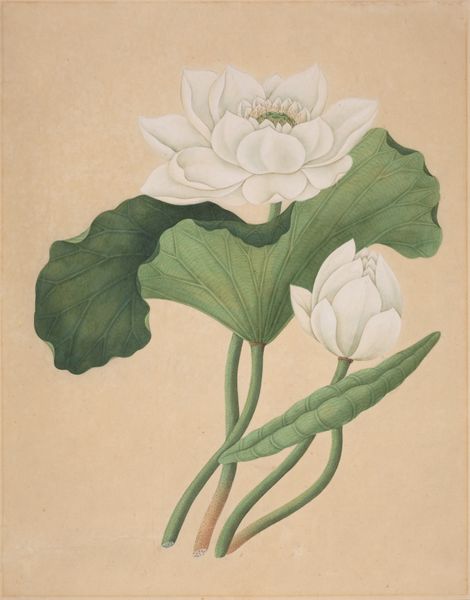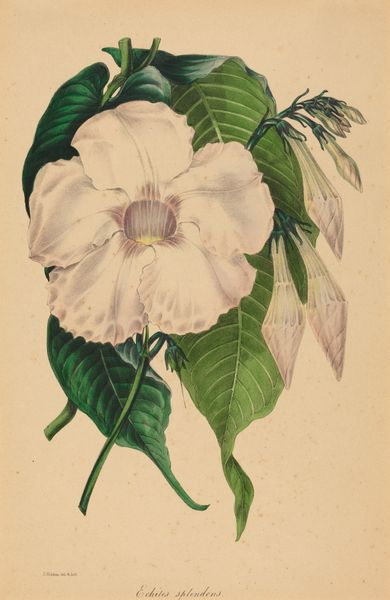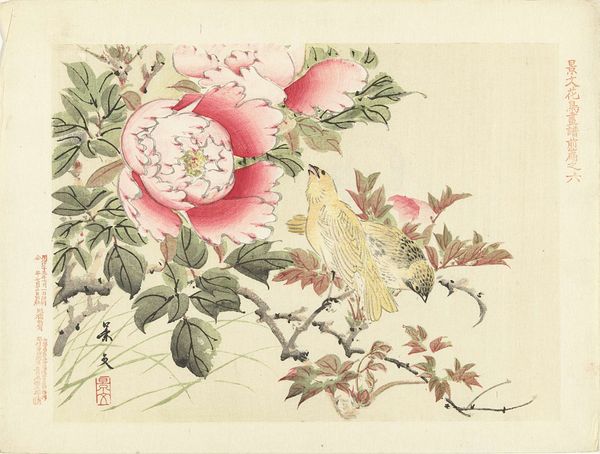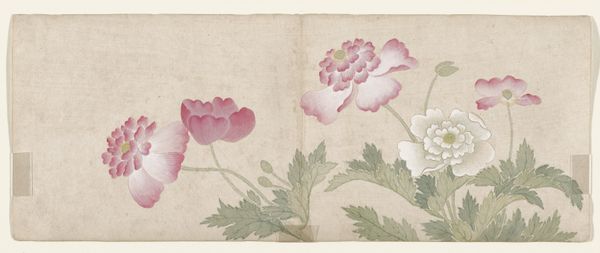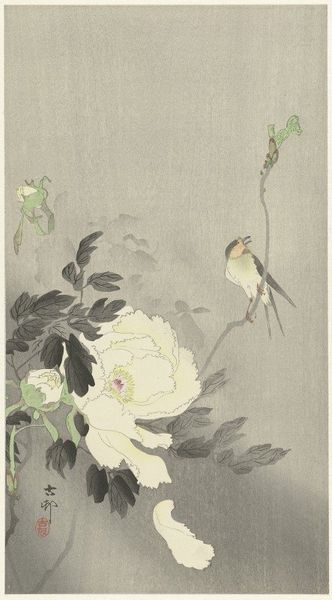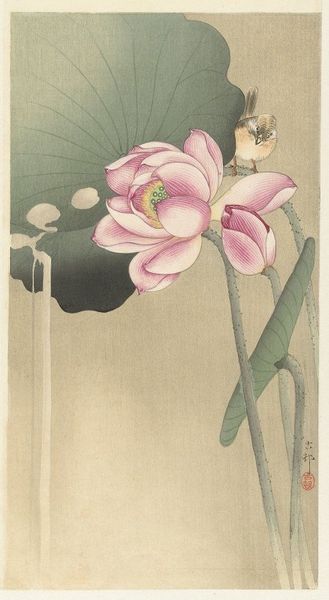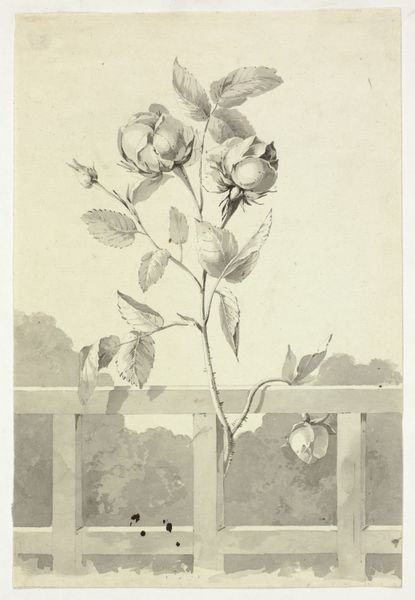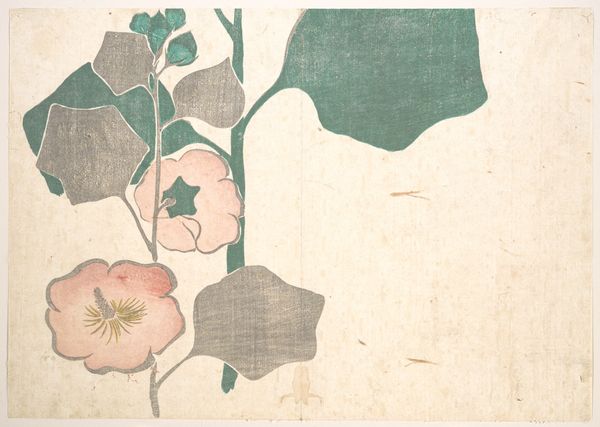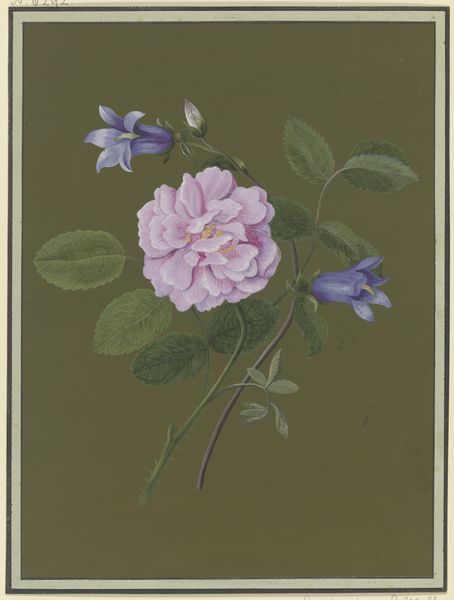
Dimensions: 14 3/4 x 11 1/2 in. (37.5 x 29.2 cm)
Copyright: Public Domain
Curator: Looking at this composition, I am immediately struck by its tranquil mood. The subdued palette creates a palpable sense of quietude. Editor: We’re observing "Cotton Rose Mallows in the Rain" crafted between 1891 and 1892 by Okada Baison. This watercolor painting finds its home here at the Metropolitan Museum of Art. Curator: The almost monochromatic approach, dominated by soft greys and browns, emphasizes the forms with incredible subtlety. The artist uses gradations to suggest the texture of the petals and leaves, demonstrating technical virtuosity. The rain appears to weigh down the leaves and blooms in a hyperrealistic display of painterly talent. Editor: Okada Baison was indeed highly skilled. We should recognize this artwork within the broader context of Meiji-era Japan, a period of rapid modernization and cultural shifts. Artists like Baison navigated the influx of Western art styles while retaining traditional Japanese aesthetics. What might this convergence reveal? Curator: The formal construction showcases both Impressionistic sensibilities and Japanese artistic traditions. The composition feels meticulously structured, creating a harmony between realism and artistic license. This is also present in the brushstrokes of the water droplets against the flower itself. Editor: That's insightful. We have to consider how Japanese aesthetics, deeply influenced by Zen Buddhism, valued asymmetry and the suggestion of space as much as detail. How might this particular style, common during the Meiji period, reinforce notions of nationalism by preserving specific cultural expressions? Curator: Perhaps by expressing a Japanese approach to portraying nature with its traditional appreciation for nature, even in less picturesque conditions such as rainy conditions. It shows us the enduring themes central to its heritage. The bird and blossoms create this perfect harmony to this effect. Editor: Considering these contextual layers deepens our appreciation for the artistry. Thank you for taking us into Okada Baison’s masterful exploration of form. Curator: A true convergence of technique and perception, it resonates across cultural lines, doesn't it?
Comments
No comments
Be the first to comment and join the conversation on the ultimate creative platform.
